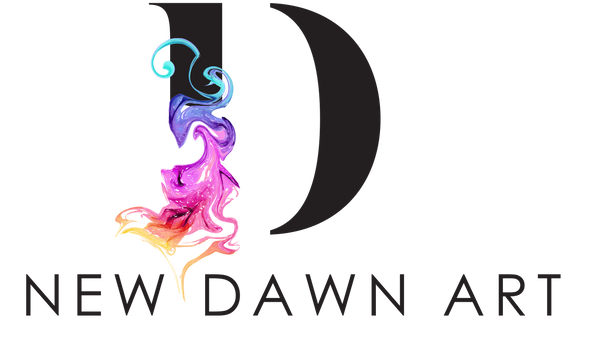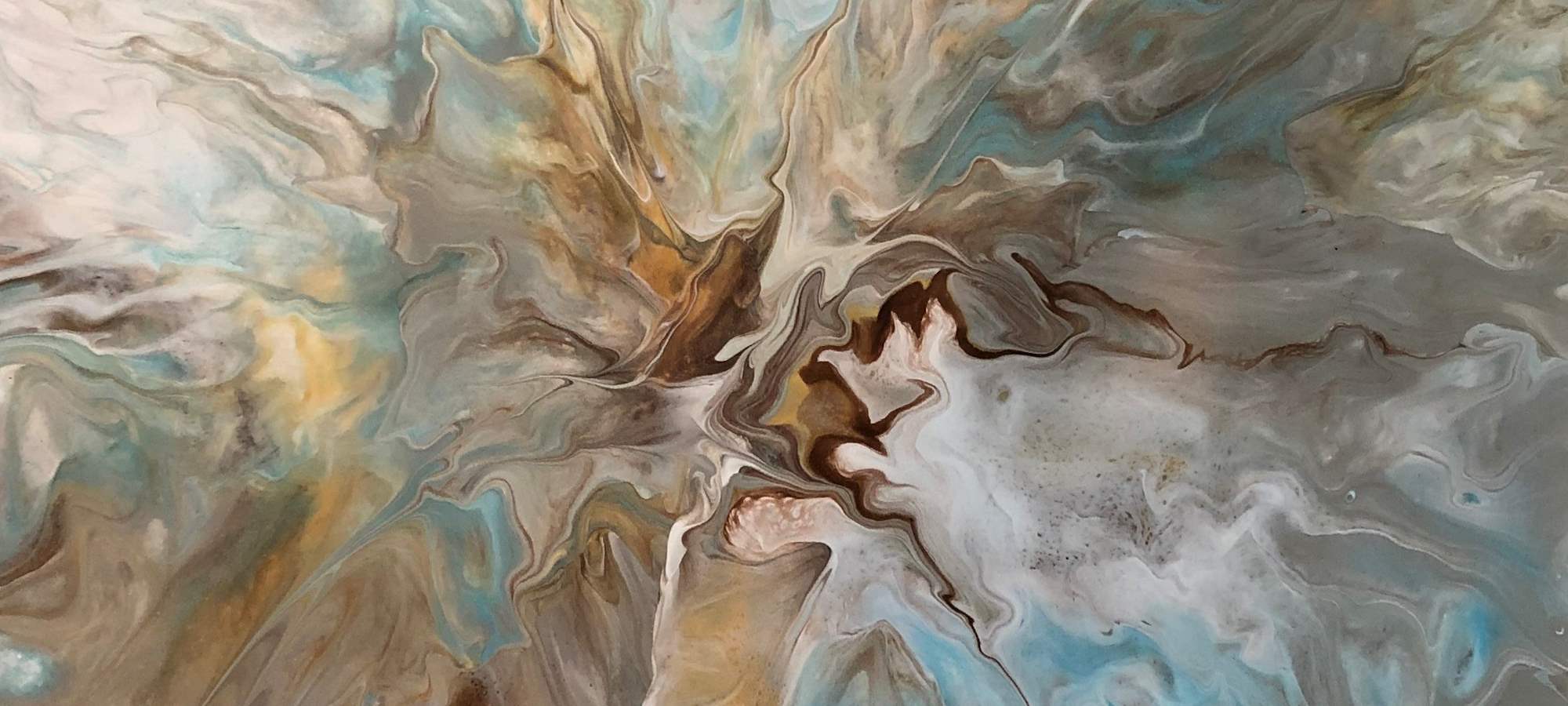Pour Painting, Fluid Art, Flow Painting
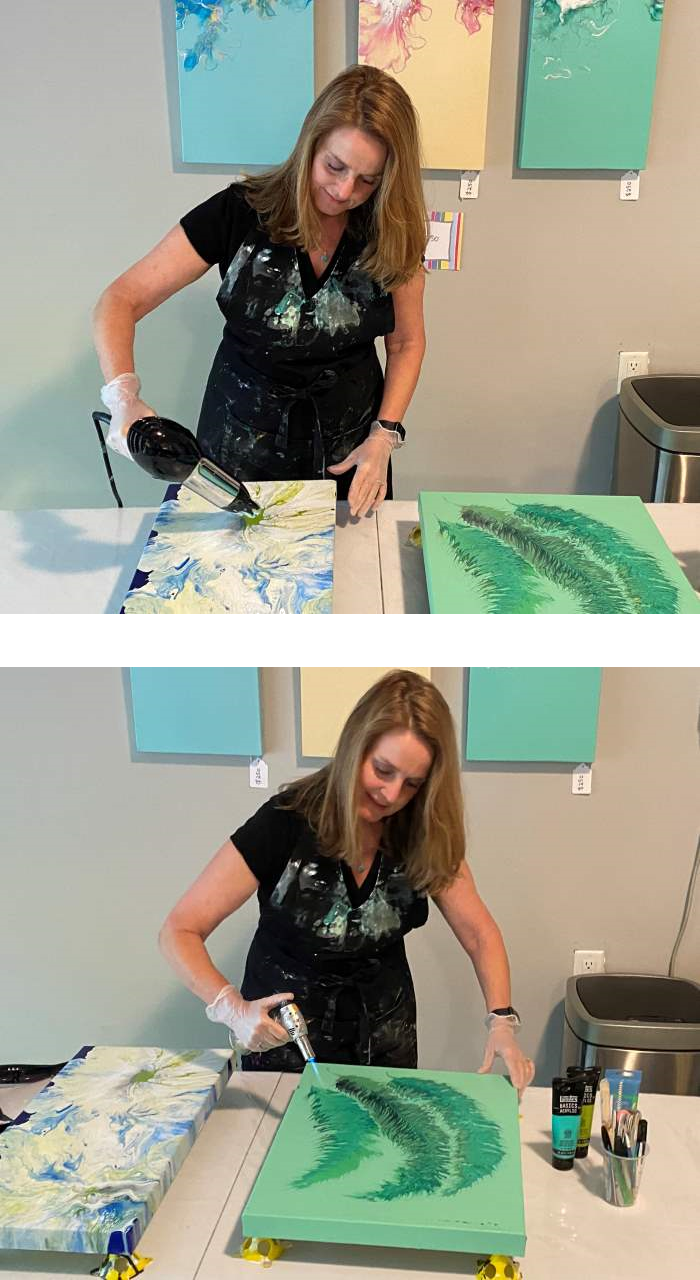
How It's Done
Acrylic Pour Painting, also known as Flow Painting, or Fluid Art started in the 1930s. Fluid Art can be defined as any form of art that uses free-flowing fluid paint. Originally the art produced was considered a “happy accident on canvas” and consisted of complex, fluid patterns and startling color effects, more psychedelic looking than a deliberate effort. In modern paint pouring, the techniques and colors used are more intentional and there are many ways artists pour their paints to get the effects they want.
The magic revolves around the consistency of the paint. The goal is to mix a smooth, thin, fluid consistency that can easily be manipulated on the canvas. You can thin your acrylics with a medium, water or a mix of the two. The ratio must be just right or the paint will not hold its shape on the canvas. Many times I have created a beautiful pour only to return the next morning to find that most of the design had shifted or moved and dripped off the side of the canvas, very frustrating!
Conflict between paints of different densities, the use of resist additives and techniques used to manipulate the paint cause patterns to occur. Pleasing patterns that are usually abstract in nature are the end result. Instead of working with typical painting tools, such as brushes and palet knives, the colors are poured on the canvas and manipulated using various techniques. The result is unpredictable and gives each piece of art its own unique character. Depending on the technique used, such as blowing the paint with a dryer or tilting the canvas, a completely different work of art is created; no two are ever exactly alike!
Pour Painting Techniques
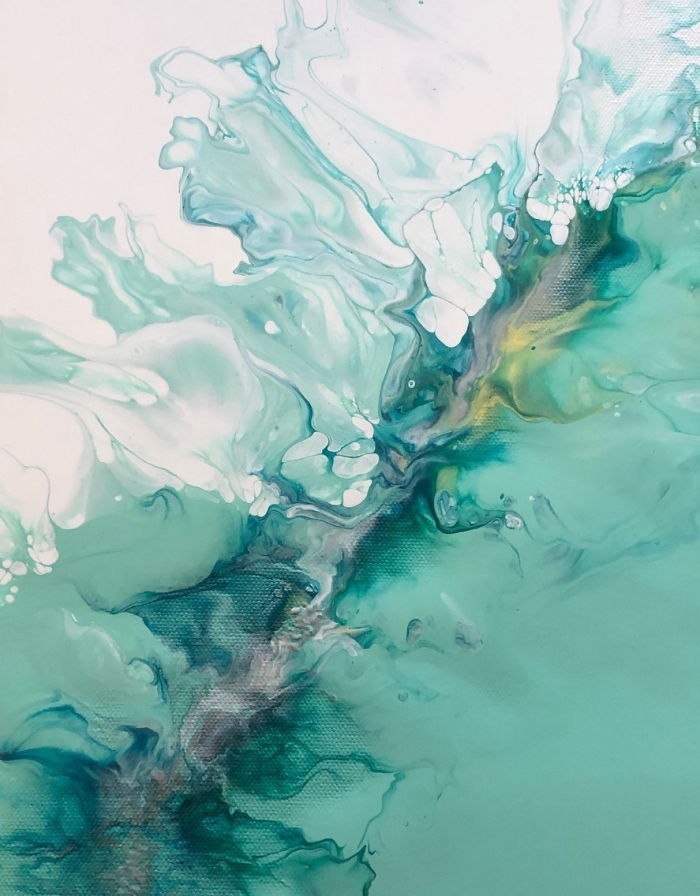
Dutch Pour
A pouring technique that uses air to manipulate the paints on a canvas. The artist uses items like a hair dryer, straw or their own lungs to make designs on the canvas. This technique produces ribbon like edges and cell lacing.
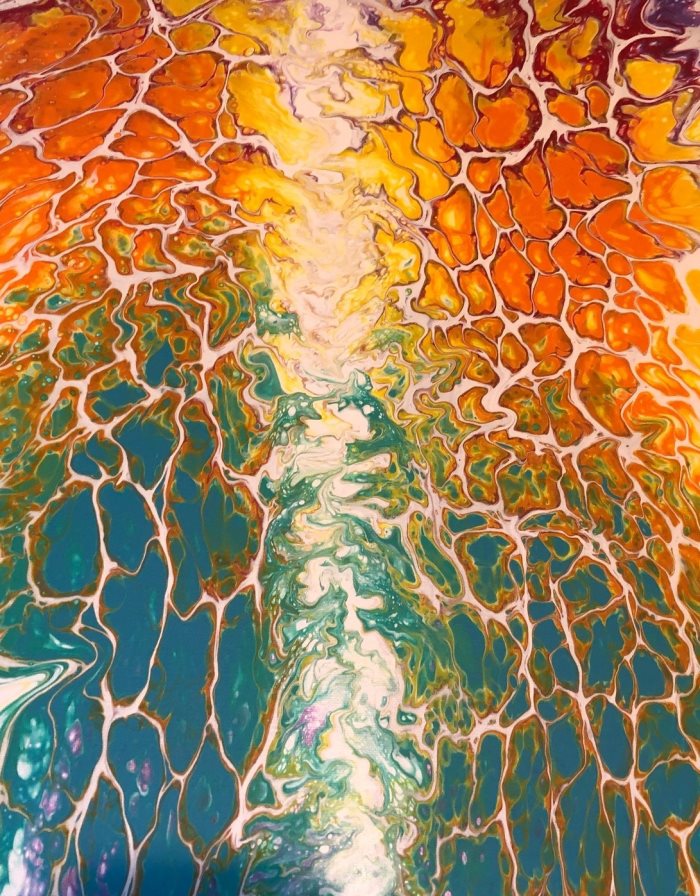
Puddle Pour
This technique allows all of the colors to swim together, without mixing. The puddle pour consists of laying puddles of color onto your canvas. Then tilt or blow the canvas to meld the colors into one another and create patterns.
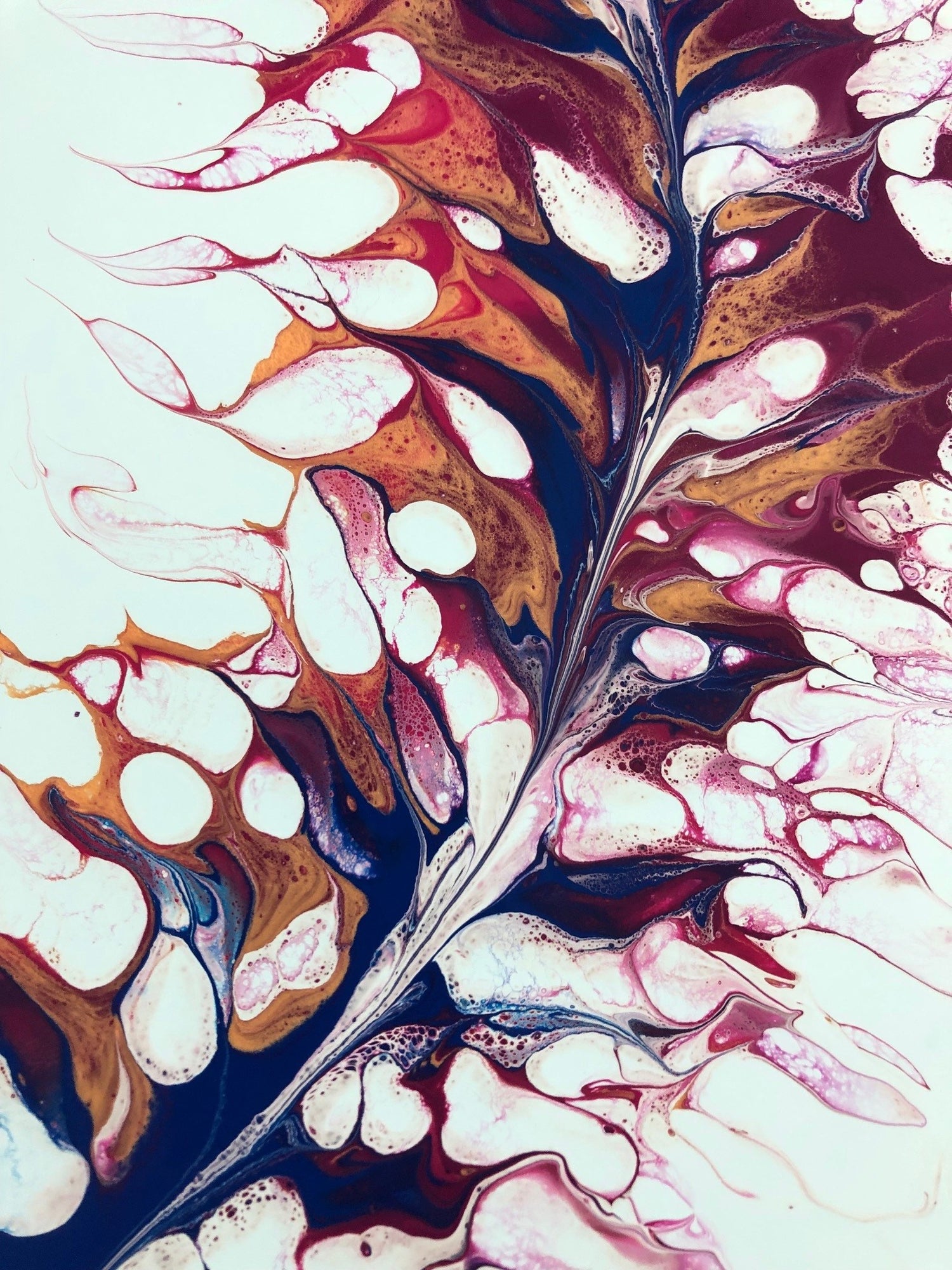
Kiss Pour
This technique creates the most amazing fine lines and feathery swirls. With a kiss pour, you take two cups of layered paint, then pour them out onto the canvas at the same time making sure that the two cups are touching (kissing) during the entire pour.
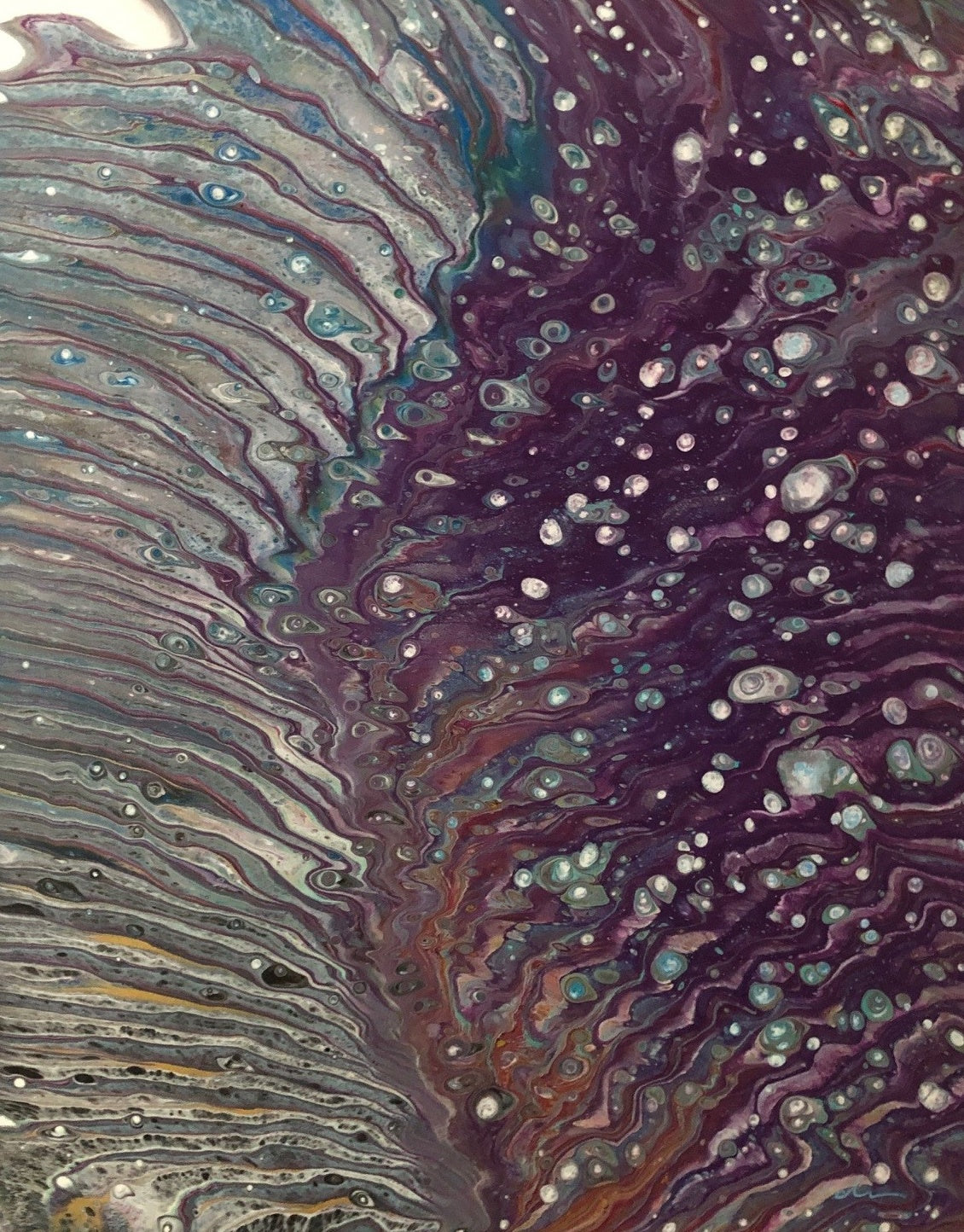
Dirty Pour
The process of layering individual colors in a cup, and then pouring them onto a surface all at once. Dirty pours produce a wide variety of results. After the paint is poured, you manipulate the surface to achieve the desired pattern and style.
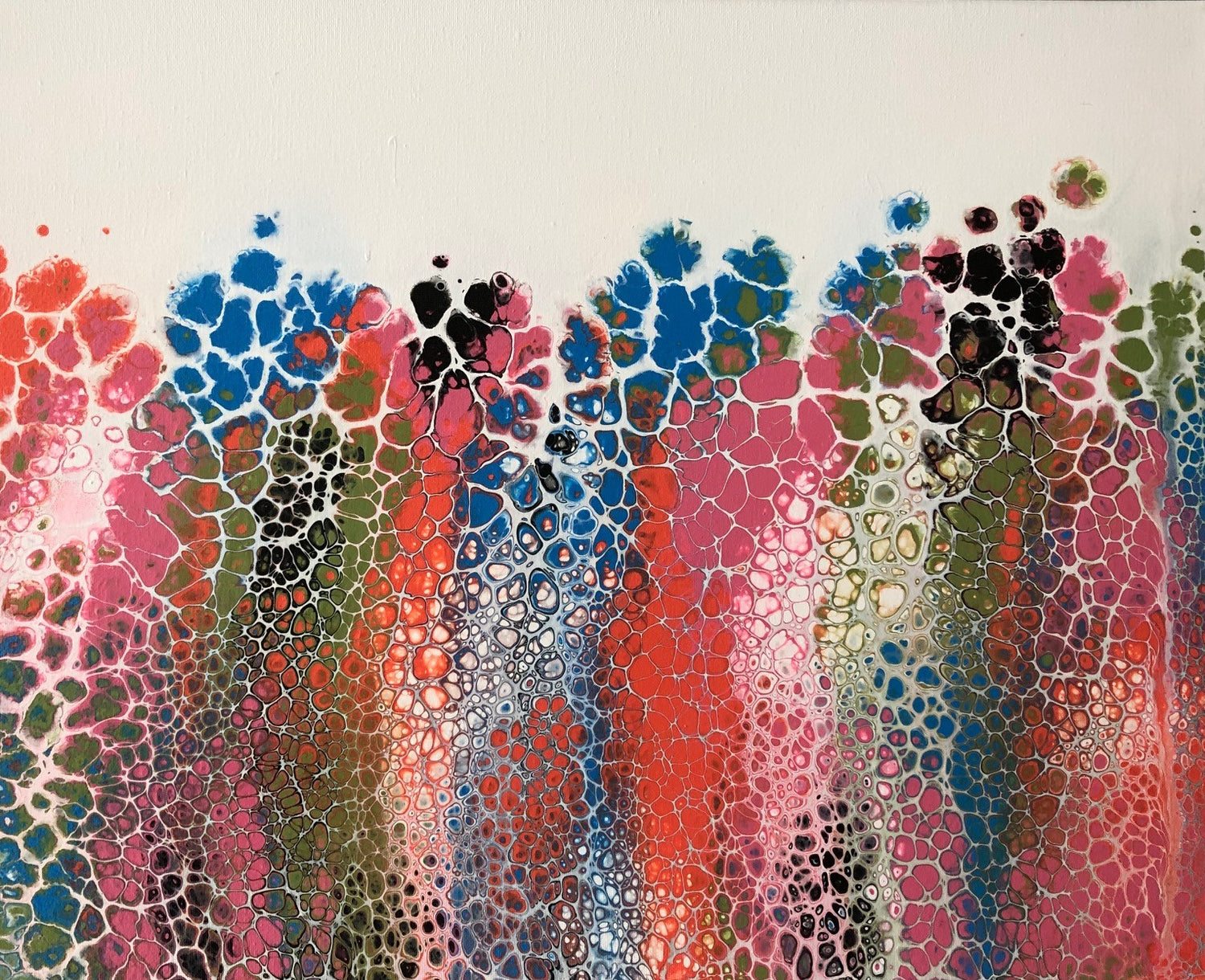
Swipe Pour
With this technique you lay the paint on the canvas, either in puddles or strips, and use something like a plastic sheet to swipe the activator color over the entire piece. This technique produces fluid color patterns, making the cells more vivid.
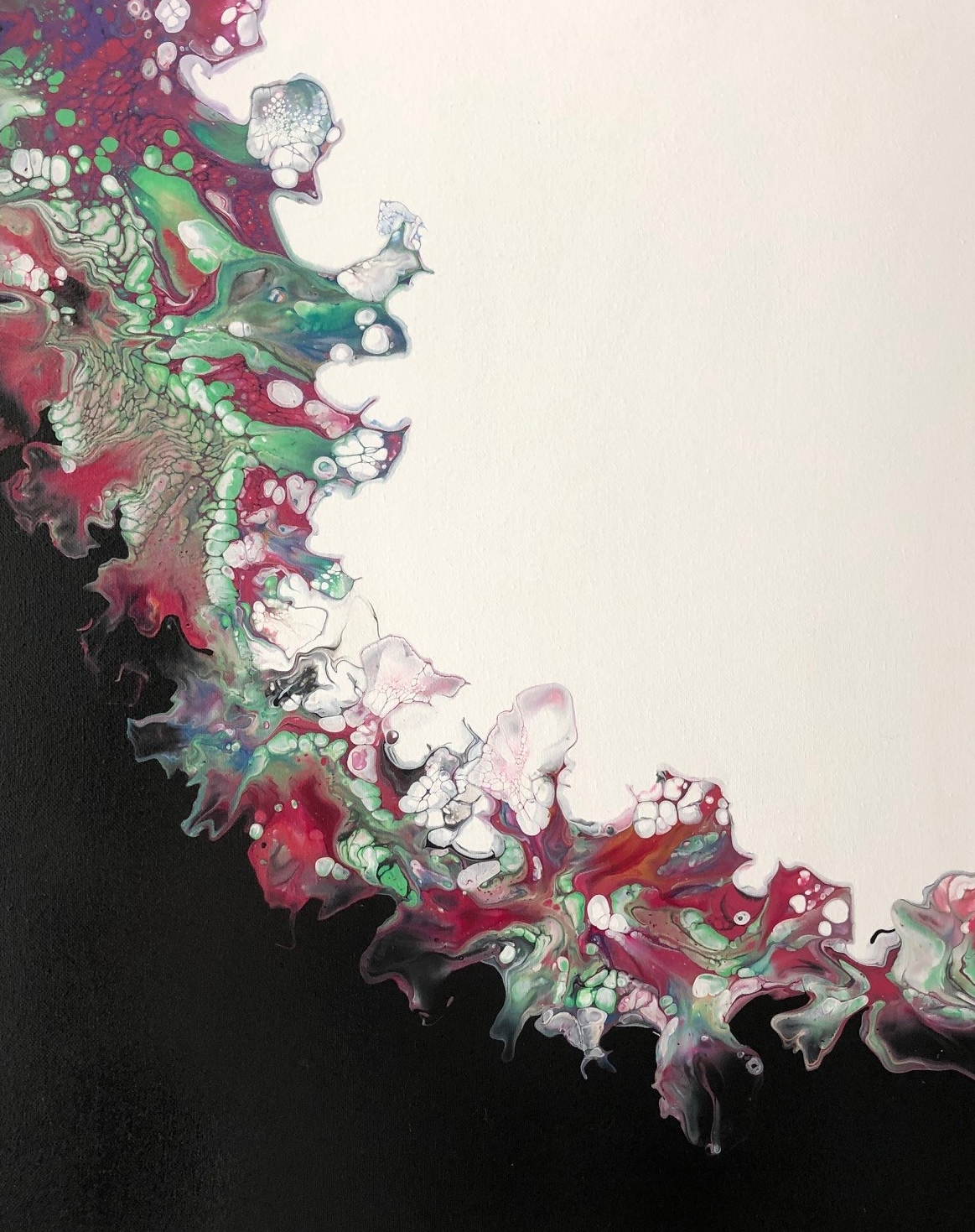
Funnel Pour
A funnel pour is where the paint is applied via a funnel. You fill the funnel while pressing it tight to the canvas, then move the funnel along the canvas releasing the paint. It produces really interesting effects due to the tapered nature of the funnel.
